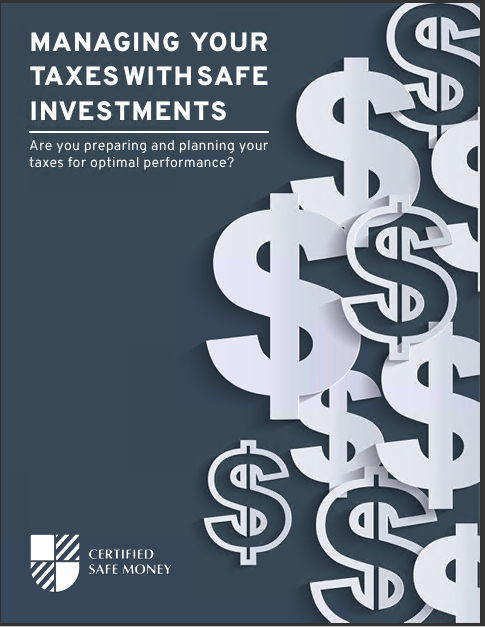How to Plan for Healthcare Costs in Retirement with Low-Risk Investments
Planning for healthcare costs in retirement is a critical aspect of financial planning. As people age, healthcare expenses often increase, making it essential to have a robust strategy to cover these costs without jeopardizing your financial stability. Low-risk investments can provide the security and steady income needed to manage healthcare expenses in retirement. Here’s how to plan effectively for healthcare costs in retirement using low-risk investment strategies.
Understanding Healthcare Costs in Retirement
Healthcare costs in retirement can be substantial. According to Fidelity’s Retiree Health Care Cost Estimate, an average retired couple aged 65 in 2021 may need approximately $300,000 to cover healthcare expenses throughout retirement. These costs include premiums for Medicare Part B and Part D, out-of-pocket expenses for medical services, prescription drugs, and long-term care.
The Importance of Low-Risk Investments
Low-risk investments are essential for retirees because they provide stability and protect against significant losses. These investments typically offer lower returns than high-risk investments but come with less volatility and a greater likelihood of preserving capital. For retirees, the priority shifts from accumulating wealth to preserving it and generating reliable income.
Key Low-Risk Investment Options
1. High-Yield Savings Accounts and Money Market Accounts:
High-yield savings accounts and money market accounts are excellent options for short-term savings and emergency funds. They offer higher interest rates than regular savings accounts and provide easy access to your money.
2. Certificates of Deposit (CDs):
CDs are low-risk savings products offered by banks and credit unions. They pay a fixed interest rate over a specified term, typically ranging from a few months to several years. By laddering CDs with different maturity dates, you can ensure a steady stream of income while maintaining liquidity.
3. Treasury Securities:
U.S. Treasury securities, including Treasury bills, notes, and bonds, are considered some of the safest investments. They are backed by the full faith and credit of the U.S. government. Treasury Inflation-Protected Securities (TIPS) are particularly valuable for retirees as they provide protection against inflation.
4. Municipal Bonds:
Municipal bonds are issued by state and local governments and often offer tax-free interest income. They are generally low-risk and can provide a stable income stream, making them a good choice for retirees.
5. Fixed Annuities:
Fixed annuities provide guaranteed payments for a specified period or for life, depending on the terms of the contract. They offer a predictable income stream and can be a valuable tool for managing retirement income and covering healthcare costs.
6. Dividend-Paying Stocks:
While stocks are generally riskier than other options listed, dividend-paying stocks from well-established companies can provide a relatively stable income stream. Companies with a history of consistent dividend payments are typically financially stable and less volatile.
Creating a Healthcare Fund
One effective way to plan for healthcare costs is to create a dedicated healthcare fund. This fund should be separate from your general retirement savings and specifically earmarked for medical expenses. Here’s how to build and manage a healthcare fund:
1. Estimate Healthcare Costs:
Start by estimating your potential healthcare costs in retirement. Consider premiums, out-of-pocket expenses, long-term care, and other medical costs. Use tools and calculators available online or consult with a financial advisor for a more accurate estimate.
2. Allocate Investments:
Based on your estimated healthcare costs, allocate a portion of your retirement savings to low-risk investments. This allocation should be sufficient to cover at least the anticipated healthcare expenses.
3. Maintain Liquidity:
Ensure that a portion of your healthcare fund is easily accessible. Investments such as high-yield savings accounts, money market accounts, and short-term CDs can provide liquidity for immediate healthcare needs.
4. Adjust Over Time:
Regularly review and adjust your healthcare fund to ensure it remains aligned with your needs. As you age, your healthcare costs may change, and your investment strategy should adapt accordingly.
Long-Term Care Planning
Long-term care is a significant component of healthcare costs in retirement. Many retirees will require some form of long-term care, whether it’s in-home care, assisted living, or nursing home care. Here are strategies to plan for long-term care costs:
1. Long-Term Care Insurance:
Long-term care insurance can help cover the costs of long-term care services. Policies vary widely, so it’s essential to shop around and understand the coverage details, including what services are covered, benefit limits, and inflation protection.
2. Hybrid Insurance Products:
Hybrid insurance products, such as life insurance policies with long-term care riders, can provide flexibility. These products allow you to use the policy’s benefits for long-term care if needed, or for other purposes if long-term care is not required.
3. Health Savings Accounts (HSAs):
If you are eligible, contribute to a Health Savings Account (HSA) during your working years. HSAs offer triple tax advantages: contributions are tax-deductible, earnings grow tax-free, and withdrawals for qualified medical expenses are tax-free. HSAs can be an excellent source of funds for healthcare costs in retirement.
4. Medicaid Planning:
Medicaid can help cover long-term care costs for those with limited assets and income. However, qualifying for Medicaid requires careful planning, as there are strict asset and income limits. Consult with an elder law attorney or financial advisor specializing in Medicaid planning.
Conclusion
Planning for healthcare costs in retirement is essential to ensure financial stability and peace of mind. By incorporating low-risk investments into your strategy, you can create a reliable income stream to cover medical expenses without exposing your savings to significant risk. Building a dedicated healthcare fund, considering long-term care options, and utilizing tax-advantaged accounts are key steps to managing healthcare costs effectively. With careful planning and prudent investment choices, you can secure your financial future and enjoy a worry-free retirement.
Contact Information:
Email: dante@credkeeper.com
Phone: 8777993433
Bio:
After spending many years studying information technology, specializing in web development, digital marketing, and search engine optimization (SEO), I enjoy applying my skills and experience in helping others achieve their goals online.
As a marketing specialist at Credkeeper, I help people get the most out of their online reputation. Your prospects perform Internet searches for your name before they buy from you. What they see on the first page of Google outweighs almost all other marketing! What do people currently see when they search your name on the Internet?
If you would like to know more about Credkeeper and what we can do for you, feel free to reach out to me!













